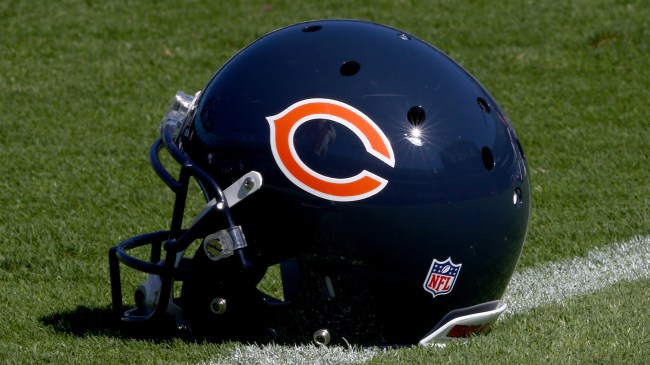
Getty Image
It took the NFL longer than it probably should have to figure out how to determine which team earned the right to be crowned champion at the end of the season—especially when you consider it failed to learn from the mistake that led to the Chicago Bears essentially scamming their way into a title thanks to the wildly crafty scheme the man who owned the team dreamed up all the way back in 1921.
I’m going to assume the vast majority of people reading this were born after the NFL introduced the world to the Super Bowl in the wake of the merger that officially united the league with the AFL in 1970, a union that marked the formation of the AFC and NFC and the playoff format that’s seen the best teams from each conference face off in The Big Game for more than 50 years.
The NFL had already adopted its own postseason prior to that point, as the league split into a couple of divisions (which were eventually rebranded as “conferences”) in 1933 thanks to a dispute over the system that had previously been harnessed to hand out a trophy when the regular season wrapped up.
That disagreement involved the Chicago Bears and the Portsmouth Spartans, who finished the campaign tied with the best overall winning percentage when ties were taken into consideration. As a result, the NFL had them face off in a playoff game that ended with the Bears securing the second championship in franchise history—although it probably should’ve been the first thanks to the manner in which they finessed their initial title.
The Chicago Bears won their first NFL championship by tricking the team that had basically won it
In 1921, the Bears were still known as the “Chicago Staleys” (they’d rebrand the following season but I will refer to them by their current name for the rest of his article) at a time when the NFL was still operating as the “American Professional Football Association” (it would also rebrand a year later).
That season, the Bears found themselves engaged in a pretty fierce race with the Buffalo All-Americans for the Brunswick-Balke Collender Cup, which was the trophy awarded to the best team in the league when everything was said and done.
The champion was based on the best overall winning percentage (ties weren’t taken into consideration), and when the season supposedly came to a close at the end of November, the All-Americans had edged out the Bears by finishing with an undefeated 9-0-2- record compared to Chicago’s 8-1.
The All-Americans had handed the Bears their only loss of the season when they faced off on Thanksgiving in a contest that ended 7-6, and while Buffalo owner Frank McNeil agreed to a rematch on December 4th (a day after the All-Americans were slated to play in an exhibition game against the Akron Pros), he did so under the condition it would also be treated as an exhibition with no impact on the regular season standings.
Buffalo was at a bit of a disadvantage when you consider it was playing on the road, coming off a train ride from Ohio after competing in a contest the previous day, and had lost a few players who decided to play in an NFL game scheduled in Detroit on the same day (as you’ll soon see, 1921 was a weird time for football).
With that said, the All-Americans were still able to hold their own but ultimately walked away with a loss after the Bears won by a score of 10-7—and Chicago owner George Halas suddenly smelled an opportunity.
The All-Americans were under the impression the season had ended, but Halas realized there wasn’t actually any official cutoff date on the books. As a result, he quickly scheduled games with the Canton Bulldogs and the Chicago Cardinals in the hopes of boosting the team’s record to 10-1, although a tie with the latter meant they ended up sitting at 9-1.
As a result, the Bears and the All-Americans theoretically had the same record if you took the exhibition game into account—which is exactly what Halas started lobbying his fellow owners to do.
He noted his squad had a 16-14 lead in the aggregate scoring and argued that Chicago beating Buffalo in their second meeting made the victory more significant. While I can’t really understand the crux of that second argument, it apparently resonated, as the owners not only agreed with Halas but passed a new rule tiebreaker rule that stated the team with the most recent victory over the opponent they were deadlocked with had the edge.
As a result, the Bears were crowned the champions of the 1921 NFL season in a coup for the ages (which has been dubbed the “Staley Swindle”). That obviously didn’t sit well with McNeil and the All-Americans. and while he spent years trying to get the league to reverse its decision, he was unable to do so before the franchise officially folded in 1929.